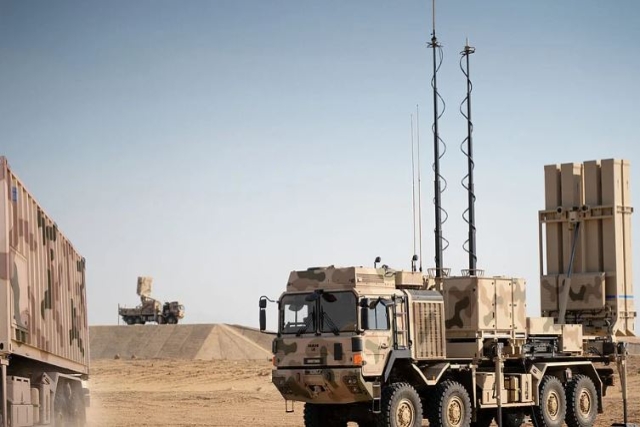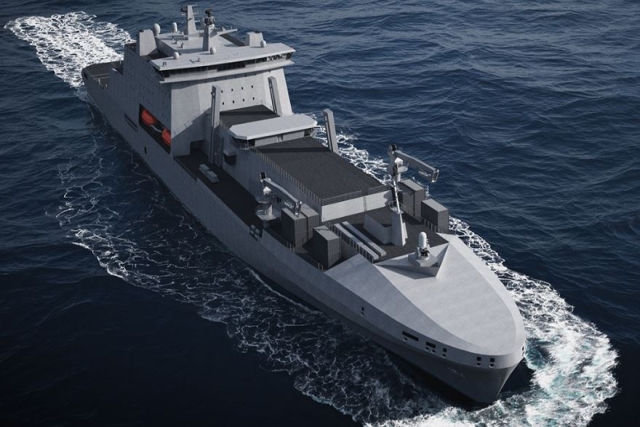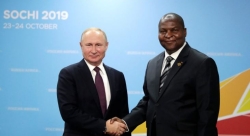Internal Security, Space To Take Importance In Future, According to IESA
_1403077417.jpg)
M.N. Vidyashankar, President, IESA
In an interview with Defenseworld.net, M.N. Vidyashankar, President, IESA (India Electronics & Semiconductor Association) talked about the pitfalls in India's domestic defense industry and how FDI will allow India to harness better capabilities.
DW : Can you give us an overview of IESA?
M.N. Vidyashankar: IESA is the premier trade body representing the Indian Electronic System Design and Manufacturing ESDM industry and has represented it since 2005. It has over 235 members -both domestic and multinational enterprises. IESA is committed towards building global awareness for the Indian ESDM industry and supporting its growth through focused initiatives in developing the ecosystem. This is through publishing credible data, networking events and alliances with other international associations. IESA works closely with the Government as a knowledge partner on the sector, both at the centre and at the state level. Previously IESA was known as India Semiconductor Association (ISA).
DW : Can you tell us about the companies that are represented by your organization?
M.N. Vidyashankar: IESA member base constitutes more than 235 ESDM companies both international and domestic. Companies from across all Electronics vertical such as ATMP companies, Distributors of equipment & materials, EDA companies, Embedded semiconductor software and hardware companies, Equipment manufacturers, Legal firms, Semiconductor/electronics system, Service provider (part of semiconductors/electronics design & manufacturing eco system) Universities, Venture funds, other ecosystem participants represent IESA.
DW : You recently signed an memorandum of understanding (MoU) with MesseMünchen International (MMI). What can you tell us about this?
M.N. Vidyashankar: The MoU between MMI and IESA is mainly based on the event of organizing the conference on Defence Electronics which IESA had previously organized with other partners in SES and Bangalore ITE.biz. This year the event will have Defence Electronics Pavilion at electronica India 2014 and productronica India 2014 which will be held at BIEC, Bengaluru, from 23-25th Sept 2014, to cater to a larger mass with focus on international stakeholders as well. The main objective is that IESA through its members and international tie-ups will create awareness about Defence Electronics potential and will keep the industry aware of its recent updates.
DW : How will this platform help future demand?
M.N. Vidyashankar: Apart from updating the industry about the key developments, this will also act as a platform to interact and collaborate between companies and various stake holders, which will ultimately lead to the benefit of the industry and will cater to the future demand through various business opportunities.
DW : Can you identify the areas in which the domestic industry is currently lacking?
M.N. Vidyashankar: Currently India’s ESDM Industry is about $84 billion and is expected to reach $400 billion in next 10 years. The Indian Semiconductor demand was $ 6.03 billion in 2011 and is expected to grow to $ 9.66 billion in 2015. However, the major challenge faced by India today is that there is not adequate manufacturing in the country to meet the demand for ESDM. It is estimated that by 2020, the demand-supply gap will lead to a situation where the electronics import bill for the country might exceed oil import costs. The domestic industry is currently lacking in productization. From just being global expert in design, India needs to focus on full product development, manufacturing for its local demand.
DW : What kind of electronic systems do you think will be the focus of future procurement? And why?
M.N. Vidyashankar: Systems relating to internal security, space, etc. will be among the key focus areas of importance in the future.
DW : What are your thoughts on FDI and what, in your opinion, can India do to harness better capabilities?
M.N. Vidyashankar: The department of industrial policy & promotion (DIPP) has proposed a draft that allows upto 100% of foreign direct investments in defence. This will in all likelihood lead to minimizing defence imports in the country and encourage manufacturing and innovation in indigenization in the country. Increase in FDI will lead to increased job opportunities and will improve the Balance of Payments and foreign exchange reserves.
DW : Can you give us an overview of the MAKES program? And what it means for India?
M.N. Vidyashankar: Under the 'make' category, 80 percent of the cost of development and prototyping will be borne by the MOD while the remainder is to be put up by the developing agency (DA). Incidentally, over 150 new projects under the 'make' category are going be rolled out this year to both defray risks as well as augment capabilities. There are also other initiatives, apart from make, that include sharing of government held intellectual property with private companies to raise their technological base and thereby free DRDO to focus more on cutting edge developments. If these measures, along with the MAKE program, are pursued, a quantum jump in the size and quality of India's domestic military-industrial complex can be achieved before the end of the decade.
DW : And what is your primary objective in terms of Electronic System Design and Manufacturing industry?
M.N. Vidyashankar: The main objectives of IESA are: To make India an ESDM powerhouse. To create global awareness for the Indian semiconductor and electronic systems industry outside of the generic 'IT' umbrella Create a win-win interaction among semiconductor and electronics product and services companies, government, academia, venture capitalists and industry bodies Create an enabling ecosystem that catalyzes industry growth and leadership Foster active collaboration between industry and universities to further expand the available world-class semiconductor and electronics talent pool Identify and drive investment opportunities Foster cooperation across industry bodies on the topics those are in the important building the industry and help citizens of India.










